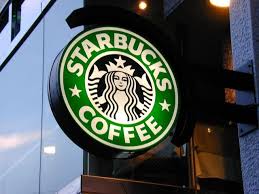For much of its history, Starbucks has been no stranger to controversy. The company has faced weathered criticism over labor practices, sourcing, and even political positions, sparking occasional boycotts. But in 2025, the focus of public frustration looks different. Many customers are voicing their disappointment over something much closer to the cup: the drinks themselves. From menu changes to recipe tweaks and rising prices, Starbucks is drawing fire for decisions that some customers feel are eroding the quality of the brand.
The shift became especially clear with the fall 2025 menu. Longtime favorites like the Apple Crisp Macchiato, a drink many fans looked forward to every September, were quietly removed. In its place, the season once again spotlighted the Pumpkin Spice Latte (PSL) and the Pecan Crunch Oatmilk Latte, but with controversy of its own.
Released on Aug. 26, 2025, the PSL appeared slightly different this year. Customers have taken to social media to complain that the drink “looks orange,” suggesting that the syrup or sauce has been reformulated, though Starbucks has not confirmed a change. The perception of artificial coloring and a sweeter, less balanced taste has sparked backlash from PSL loyalists. However, Starbucks clarified in 2024 that the color stems from pumpkin purée and natural fruit and vegetable juice.
The complaints are not limited to seasonal specials. On March 4, 2025, Starbucks permanently removed thirteen beverages from its menu, including nine Frappuccinos, White Hot Chocolate, Royal English Breakfast Latte and Honey Almondmilk Flat White. The move was part of a larger plan to simplify the menu, with the company announcing that it would reduce its U.S. offerings by roughly 30 percent before the end of fiscal year 2025.
While executives emphasized efficiency and faster service, customers were frustrated at seeing long-standing favorites disappear without replacement. By contrast, the food menu has remained largely stable, meaning that the most visible cuts have come from drinks, the very products that built the Starbucks name.
Layered on top of menu frustrations are broader concerns about value. Customers complain that while prices have steadily increased, the quality of drinks has not kept pace. Some describe weaker espresso, inconsistently made beverages and a decline in portion size. Others point to the high sugar and calorie counts in seasonal drinks. With inflation already pinching wallets, the sense that Starbucks is charging more for less has only deepened dissatisfaction.
Another sore spot is tipping culture. Many Starbucks locations have introduced tipping prompts both in-store and through the app. For a company that is more fast-casual than sit-down dining, some customers question whether tipping feels appropriate at all. The move has added to the perception that Starbucks is out of step with what its core customers want.
All of this has played out against a backdrop of financial uncertainty. Starbucks stock (SBUX) has hovered around $82 to $83 per share as of mid-September 2025, reflecting uneven investor confidence. While the company’s revenue grew modestly in the third quarter, its earnings per share declined significantly compared to the previous year. Investors responded positively to a new “Back to Starbucks” initiative designed to simplify operations, but whether it will win over everyday customers remains to be seen.
What Starbucks faces now is not a simple matter of pricing or politics, but trust. Customers return not just for a morning treat, but for consistency and comfort. When favorite drinks vanish, recipes seem altered and costs climb higher, that trust is shaken. To repair it, Starbucks could communicate more transparently about recipe changes, experiment with limited returns of discontinued flavors and emphasize consistency across locations. Offering clearer nutritional information and providing options for lighter or smaller versions of high-calorie drinks could also better align the brand with customer expectations.
For now, the conversation around Starbucks is less about global ethics and more about pumpkin spice. Yet the lesson is much the same: even the most recognizable brands are vulnerable when they lose touch with their customers. If Starbucks wants to stay at the center of coffee culture, it will need to find the right balance between simplifying its menu and preserving the drinks that made it a household name in the first place.








